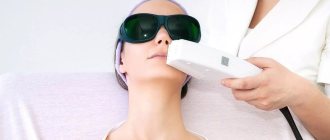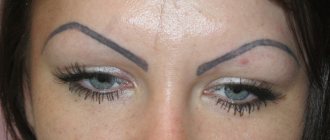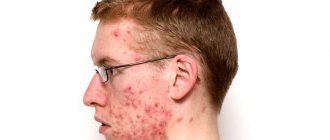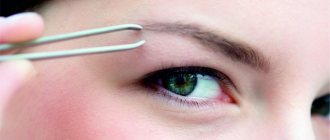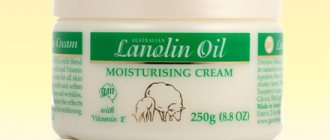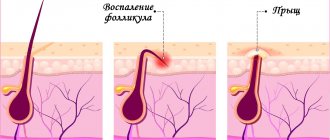Today, both men and women increasingly want to remove hair, which, in their opinion, spoils the aesthetic appearance of one or another part of the body.
The choice of depilation and hair removal methods is large.
In this article we will talk about the most effective and expensive of them - photoepilation, in particular, photoepilation of facial hair.
Benefits and effectiveness of the procedure
Photoepilation is one of the methods of hair removal, that is, the removal of hairs from the bulb. The principle of the method is the impact of a specially focused beam of light on the hair, which allows you to safely, painlessly and contactlessly remove hair over a large area of the body.
Light is absorbed by melanin contained in the hair shaft. As a result of heating the rod, the cells that are responsible for hair growth are destroyed. The follicle is destroyed completely and irrevocably - hair will no longer be able to grow in this place.
Unlike others, this hair removal method has a number of advantages:
- the speed of the procedure - for example, it takes only 15 seconds to remove hair from the upper lip, during which three flashes of light are produced. In general, the procedure on any part of the body takes from 5 to 20 minutes;
- versatility - photoepilation, unlike laser hair removal, can be used by people with any skin and hair color (except gray and white), it can be performed on any part of the body;
- accompanying processes in the form of skin regeneration and rejuvenation, production of elastin and collagen;
- integrity of the skin – during the procedure the device does not come into contact with the skin, the light beam may damage it slightly;
- complete removal of hair in six to eight sessions at intervals of two weeks to one and a half months;
- duration of the effect - after the first procedure, you can forget about your hair for five months, subsequently it will grow thinner and sparser.
Did you know?
Radiation during photoepilation is similar in structure to sunlight, but without ultraviolet radiation. Intense Pulsed Light (IPL) was first used to destroy hair in 1997.
Video block about photoepilation
In this video block you can see how a photoepilation session goes, hear reviews from those who have done photoepilation, and learn how you can do this procedure at home.
- Video with a review of photoepilation at home.
- A video about how photoepilation works, the principle of its action, and a review of the sensations during the procedure using the example of hair removal in the armpit area.
- Video review of all types of photoepilation : face, armpits, bikini area and legs.
- Video demonstrating bikini area photoepilation .
- Video tutorial from an expert about photoepilation at home.
- Review of photoepilation at home .
- Video about how photoepilation of the upper lip and chin is carried out in the salon.
- Review of photoepilation of hands with a demonstration of the process and expert comments.
An alternative to photoepilation today is laser hair removal. Reviews from doctors about these procedures are divided, so you yourself, having studied all the intricacies, must determine for yourself which is better - laser or photoepilation. Tell us about your preferences in the comments and share your hair removal experience.
Causes of increased facial hair
The face is the most problematic area for hair removal:
- Firstly, because this area is always open and all the damage on it is too noticeable.
- Secondly, since the skin on the face is very sensitive and any impact on it can lead to undesirable results in the form of allergic rashes, tumors, soreness, etc.
If facial hair is a natural factor for men, then for women it usually forms the basis of complexes and discomfort. There may be several reasons for increased facial hair in women:
- hormonal disorders (excess of male hormones androgens, which can be a consequence of diseases of the ovaries, adrenal glands, brain and pregnancy);
- metabolic and endocrine disorders associated with bad habits, malfunction of the thyroid gland, obesity;
- heredity;
- side effect when treated with hormonal drugs;
- period of puberty.
Did you know?
Excessive hair growth on the body of women due to an excess of male hormones is called hirsutism in medical practice. Excessive hair growth – hypertrichosis. It can be observed in both women and men.
It is women who most often look for ways to get rid of problematic facial hair and are faced with the problem of choice, since not all methods are suitable for this part of the body. For example, when shaving, hair will grow more intensively, thicker, and stubble will appear. Waxing and sugaring are painful and lead to severe irritation. The most effective methods of facial hair removal are laser and photoepilation.
bikini area photoepilation
Hello my goddesses!!! How did yours go? And in terms of self-care?))) Everyone is so great! I'm really proud of you!!! Keep it up, my girls!)))
MAIN POST HERE And today we are talking about body care. I think this question interests everyone)))
Body care has a lot in common with facial skin care. The body also needs to be cleansed, moisturized, nourished, massaged, toned, etc. so that our skin remains firm, elastic and beautiful for many years. The difference in caring for facial skin and body skin is that more aggressive cosmetics are used for the body, since the skin on the body is much thicker and rougher than on the face. High-quality body care at home cannot do without cleansing. With regular and systematic care, your skin will remain elastic, elastic and velvety for a long time. What is needed for this? At a minimum: - good sleep; - rational, balanced nutrition; - systematic sports activities; - properly selected cosmetics. Some people choose the services of a cosmetologist, although body care at home will be no less effective. Body care at home: 1) cleanse the skin of the body, i.e. take a bath or shower. If previously soap was used for these water procedures, which dried out the skin, now it is successfully replaced by shower gel. It has a more gentle effect, maintains a normal pH balance of the skin, perfectly moisturizes it and is suitable for daily use. Any representative of the fair sex can choose the effect of the gel and her favorite scent on her own. Baths play one of the most important roles in body care. After all, water not only cleanses our body of sweat and dirt, it relieves fatigue, tones and invigorates, gives energy and a feeling of comfort, freshness and renewal. Water makes the skin silky, velvety and elastic. And together with herbal extracts, aromatic oils and other healthy additives, it simply works wonders (and you feel like a goddess). What can you add to your bath? A bath with salt (sea salt) is the easiest option. Sea salt contains the entire complex of minerals necessary for a beneficial and healing effect on the body, giving it a pleasant feeling of freshness and comfort. The healing properties of sea salt: analgesic effect, anti-inflammatory effect, increases the activity of tissues and organs, participation in metabolic processes (restructuring). Fill the bath with warm water, add 200g of salt. You need to take this bath for 15 minutes. Bath with soda and salt for weight loss: 300 grams of salt and 100 grams of soda should be dissolved in warm water. Then lie down in the bath. Duration of the procedure: 10-15 minutes. Next, we rinse and go to bed for an hour. One bath: minus 300 grams Bath of mint leaves Used for fatigue, obesity, and toning. Take 200 grams of mint, pour 4 liters of boiling water and leave for 1 hour. Bath with essential oils Essential oils have long been successfully used to strengthen cell membranes, accelerate metabolic processes and improve skin regeneration. Aroma oils help improve the nutrition of skin cells and increase muscle tone. For cellulite, the following esters are recommended: orange, lemon, tangerine, grapefruit, rosemary, bergamot, pine, juniper, sandalwood. Essential oils should be thoroughly mixed with a glass of kefir and dissolved in water. Duration of the procedure: 20 minutes. Water temperature: 37C. Possible mixtures: * 3 drops juniper, 1 drop geranium, 1 drop rosemary, 1 drop sage, 1 drop lavender. * 4 drops lavender, 5 drops thyme, 3 drops lemon, 5 drops rosemary. * 4 drops rosemary, 6 drops thyme, 2 drops lemon. Cleopatra's Bath For the bath, heat 1 liter of milk (do not bring to a boil). Then melt 100 grams of honey, pour it into the milk and stir thoroughly. Before taking a bath, mix 350 grams of fine salt with sour cream and rub thoroughly into the skin using circular movements. Then wash. Next, pour the mixture of honey and milk into a bath of water. Duration of the procedure: 15-20 minutes. Salt cleanses the skin, milk and honey relieve fatigue and nervous tension, rejuvenate the skin. And if you also add aromatic candles?)))
2) use a body scrub - no more than once or twice (before or after using the gel) a week. With its help, you can easily cleanse the skin - remove dead and keratinized skin particles. The scrub is applied with light circular movements; You need to start applying the scrub from your feet and gradually work your way up the body. People with very dry skin, as well as those whose skin is prone to irritation, should use the scrub with caution. It is not recommended to use the scrub immediately after epilation or shaving. In order not to overload the post, you can look at recipes for body scrubs here and here. 3) we use products to prevent and combat cellulite. Their use will nourish the skin, moisturize it and improve its structure. Let's find out what they are. Typically, such products include: - mineral salts (promote the removal of toxins); — extracts of various plants (help improve metabolic processes; help reduce weight); - caffeine (participates in the breakdown of fat); — essential oils (improve and increase metabolic processes; help in removing harmful substances from the body). Cellulite is one of the most common metabolic disorders, which affects mainly women. Its first signs can appear as early as adolescence, it usually worsens during pregnancy, and haunts us throughout our lives! So what is cellulite and is it possible to fight it? Cellulite is nothing more than a violation of water-fat metabolism; it is a real disease, with symptoms, degree of damage and treatment methods.
Causes and stages of cellulite: There are many reasons for the occurrence of cellulite, including heredity, metabolic disorders, a tendency to gain excess weight, hormonal disorders, a sedentary lifestyle, the wrong choice of underwear and clothing, lack of physical activity, pregnancy. Cellulite is distinguished by the degree of manifestation, and very often it can appear from the initial stage and increase to the final stage. But in some cases it remains in the initial stages all his life. The very first stage of cellulite is characterized by compaction of fatty tissue, small, barely noticeable lumps under the skin, which are visible only when the muscles are tense. The second stage is accompanied by swelling, unpleasant sensations when touched and increasing irregularities. The third stage is manifested by the formation of a persistent “orange peel”, the outflow of lymph is difficult, and there is stagnation of blood in the capillaries. Inflamed skin is quickly injured, and bruises do not go away for a long time. At the fourth stage, the tuberosity is more obvious even without compression of the skin, the connective tissue grows, and dense formations are formed - cellulite stones. Measures against cellulite must be adequate, that is, correspond to the stage of cellulite damage. You should not think that only hardware cosmetology in expensive salons can cope with its manifestations. We will tell you how to get rid of cellulite at home. Today, it is possible and necessary to fight cellulite at home - and not only with the help of special compositions for body wraps, anti-cellulite creams and massagers, but also with the help of folk remedies, thanks to which, even before the very concept of “cellulite” appeared, our great-grandmothers kept their skin smooth and smooth. smooth! There are many beauty recipes aimed at eliminating the manifestations of cellulite, and among them, in the first place are medical procedures - procedures that have amazing decongestant, absorbable and restorative properties. Honey not only nourishes the skin and moisturizes it, but also restores microcirculation of blood and lymph. That is why it is effectively used for wraps, masks and rubbing. Coffee, chocolate, white clay and kelp have similar properties. All of the listed ingredients can be used for wraps with a thermal effect, which is achieved by applying food-grade thermal film over the composition. Honey anti-cellulite massage Honey anti-cellulite massage at home is a very effective procedure, the effect is quite similar to a salon massage. After it, cellulite disappears for a long time, thighs lose weight. However, a honey massage is quite painful, and sensitive people may end up with bruises after it! You need to do 10 massage procedures, they are done every other day. You will need natural honey and essential oils (it is best to take citrus fruits - lemon, orange, petitgrain, tangerine). Honey anti-cellulite massage at home is done like this: take 2 tablespoons of honey, drop 20 drops of essential oils into it (you can combine, for example, take 10 drops of lemon and 10 drops of orange oil), stir. Now apply the mixture thickly to the areas affected by cellulite. After application, glue the palms and peel them off. It's quite painful to peel off, but that's the whole point. We process the entire area from bottom to top. Then we go along it again, and so on until the honey becomes completely viscous and white. Do not hurry. After the honey massage procedure, wash off the honey and apply any anti-cellulite cream for greater effect. It should be added that the results from using anti-cellulite products can only be seen if you use them day after day and for more than one week in a row. You can choose different products for different areas of the body - for the buttocks and thighs, for the abdomen, for the chest. Any nourishing cream can be applied to areas of the body that have not received replenishment in the form of anti-cellulite products. 4) where are we without hydration) The skin needs hydration all year round, its hydro-lipid balance is tested by heat, ultraviolet radiation, salty sea water, drying wind, air conditioning, heating in winter. Of course, you should be guided by your skin type. For dry skin, a product with a thicker consistency is suitable; for oily skin, a gel-like or powdery texture. In summer, it is especially important to protect your skin from the sun, so don't discount light creams and moisturizing sprays with SPF. Lovers of water treatments should remember that a cool shower not only refreshes well, but also noticeably dries the skin, and therefore a moisturizer should be applied every time after bathing. Excess hair Excess hair is a strange joke of nature, a reminder to civilized people that they were once savages. In order to resemble their wild ancestors as little as possible, unnecessary hair has to be constantly removed. Laser and photoepilation are advertised as an absolutely reliable method of permanently removing hair without pain, but during a consultation it usually turns out that this procedure gives a good long-term effect, but to completely destroy all excess hair it is necessary to repeat it many times (no one will tell you in advance how many), and it costs very much. It is cheaper and more reliable to remove hair from the legs and thighs once and for all with the help of professional electrolysis, during which a cosmetologist sequentially destroys each hair follicle with electrical impulses, practically burning it. This is a slightly painful procedure, and you will also need to go through it more than once, but it’s still worth deciding on it to get rid of excess hair once and for all. Removing hair at home with an electric epilator is not the same. Here, the hair is simply pulled out from the roots using a special apparatus, as in the procedure for hair removal using wax. Unfortunately, plucked hair grows back after some time. There is a whole arsenal of chemical depilators in the form of pastes, creams, and sprays. The chemical method is the fastest, easiest and completely painless, but depilatories dry out the skin quite a lot. It’s up to you to decide which method of getting rid of unwanted hair, but don’t walk around with grown prickly “stumps,” otherwise your husband might want to stroke your leg at that very moment. He will experience such a specific sensation))) It is difficult to fight nature, but a civilized woman will not show off her legs until she gets them in order. If you use a razor, then use shaving gel. If you don’t have gel/foam on hand, you can use hair conditioner. Do not shave against the direction of hair growth; you will cause irritation and ingrown hairs.
Bikini design Bikini design (intimate hairstyles) is a direction in the art of decorating the human body, which consists in the care and decoration of intimate areas on the human body, creating intimate hairstyles in the bikini area. They perform bikini design in beauty salons. Most often, such rooms are opened at fitness clubs, beauty and health centers. Psychologically, bikini design has a beneficial effect on a person, instilling a feeling of confidence and comfort. The procedure for performing a bikini design: ■ hygienic treatment of the bikini design area; ■ choosing an intimate haircut model; ■ choice of colors and decorations; ■ preliminary shortening of hair length; ■ allergy test; ■ lightening hair and preparing it for coloring; ■ working with several colors on a picture; ■ hair coloring; ■ depilation of the bikini area; ■ treatment of the bikini area after depilation; ■ decorating hairstyles with decorative elements. There are catalogs containing more than a hundred men's and women's intimate haircuts. In Europe there are several periodicals that publish new products with descriptions of the technique of their execution, just think! We do this at home. You will need a sharp razor, a cosmetic pencil and, of course, a battlefield - regrown vegetation. It would be nice to also get a trimmer (you can borrow one from your man). Decide on a drawing. Start with simple designs - stripes, circles. Take a shower or bath to soften coarse pubic hair. If you have a trimmer, use it to trim your hair – it will be shorter and neater. Apply a design to the skin using a pencil, adjusting the result in the mirror. Carefully shave everything along the outline of the design. If possible, shave in the direction of hair growth. Now thoroughly wash your bikini area of shaving cream and pencil. Use a suitable anti-irritant. Ready! Choosing intimate cosmetics Everyone understands the importance of special care for the genitals. In addition to external importance (smell, for example), this issue has much more important aspects, for example, health - discomfort or even disruption of normal female reproductive functions. Female genital organs have special characteristics - microflora, acid-base balance. Violation of all established parameters can be caused not only by failure to comply with hygiene rules, but also by the use of inappropriate intimate cosmetics. Or not with intimate cosmetics at all, but with ordinary products not specifically selected for a woman’s intimate organs. The purpose of intimate cosmetics is to cleanse and tone the vagina. Some products from the line of intimate cosmetics also have an antiseptic effect and/or can deodorize the intimate environment. Intimate gels/foams Recommended for mandatory daily use as they have moisturizing and toning properties. In addition, it is the gels that are usually based on extracts of various plants and oils, which gives intimate gels pronounced bactericidal properties. Experts say that, for example, after a certain time the fungus gets used to almost all the useful components of intimate cosmetics. In addition to Australian tea tree oil, which is widely used in intimate cosmetics and is often included in intimate gels. Intimate soaps A good intimate soap (and all other intimate cosmetics) should not contain components of ordinary soap that cause vaginal dysbiosis (disturbance of normal microflora), leading to other diseases and other unpleasant odors. Soap can be either bar or liquid. However, we note that liquid soap (not only intimate soap) is considered more hygienic, since foreign elements (dust, germs, dirt from hands) do not accumulate on it. The soap contains antiseptic additives that prevent certain diseases (green tea, ylang-ylang, calendula, tea tree oil, chamomile). Often intimate soaps contain extracts of various herbs, minerals, etc., which have an additional positive effect on the mucous membrane, tissue and microflora of the vagina. Intimate wipes, sprays They are used mainly as additional intimate care products. Intimate wipes for cleansing when other methods are not available (for example, on a train). Intimate sprays can, among other things, also have a deodorizing effect, since they do not contain alcohol (at all). Lubricants Most lubricants are used, of course, in sexual activity, preventing possible discomfort caused by the lack of proper self-hydration of the vagina. However, lubricants also have an anti-infective effect, moisturize the vaginal mucosa and even have some therapeutic functions. Some lubricants can have a positive effect on erections, not only for you, but also for your partner. Like any other product from the intimate cosmetics arsenal, lubricants maintain intimate microflora in a healthy state. Remember that if you have diseases of the external genitalia, the use of intimate cosmetics is a must. In addition, the use of special intimate cosmetics does not cancel or change the rules of personal hygiene and the basic rules of daily washing, for example. The fact that intimate cosmetics appeared on the market relatively recently does not make it a “delicacy” and “the preserve of the elite.”
SO, THE TASK:
1. We continue to follow our water regime, praise ourselves and be beautiful at home (write down the amount of water you drink and compliment yourself). 2. We perform our daily beauty rituals: Morning: * wash your face * brush your teeth * gently massage your lips with a toothbrush * tone your skin with an ice cube and green tea * restore PH with tonic or lotion * moisturize your face and neck with cream (along the massage lines) * check the shape of your eyebrows and, if necessary, make adjustments* apply cream/gel/mousse (whatever) to the skin of the eyelids with light patting movements, without stretching the skin, using ring fingers along the massage lines!
*intimate hygiene (we have a hygienic shower - super!) Evening: * make-up removal (we cleanse the skin of cosmetics and dust during the day) - along massage lines! * brushing teeth
* take a shower (body scrub, hair removal) * restore PH with tonic or lotion * apply nourishing cream to the face and neck (along massage lines) NO EYELID CREAM NECESSARY! Don't forget to wear a headband to protect your hair. *apply lip balm
* moisturize the skin with body milk (or someone else uses cream/lotion/oil) * do neck exercises (10-15 minutes a day)
3. Tell us how you take care of your body? Show your funds)
Kiss you!!!
Preparing the face
As with other methods, the effectiveness of photoepilation directly depends on proper preparation for it. The first step is to seek advice from a specialist, for example a dermatologist, who should determine whether you have contraindications to this procedure.
To prepare your face for photoepilation, you need to:
- stop sunbathing two weeks before the scheduled session;
- do not use self-tanning preparations;
- when going outside, protect your face with a hat with a visor or wide brim, and also use sunscreen with a filter of at least SPF 30;
- a few weeks before doing photoepilation on the face, abandon any methods of hair removal, including plucking and waxing;
- Avoid taking medications, in particular antibiotics and tranquilizers.
Advice ! The length of the hairs on the day of the procedure should be 1-2 mm.
Has light hair removal been proven to be harmful?
Proponents of this type of hair removal claim that the action of targeted light flashes is beneficial for mature skin. Under their influence, the process of rejuvenation of the epidermis is launched, the production of collagen and elastin, which promote regeneration, is accelerated. But before you run to the salon to combat annoying hair, you need to know for sure whether photoepilation is harmful, and are there any contraindications to the procedure? And, by the way, there are a lot of them:
- varicose veins (expansion of veins);
- the presence of wounds, inflammations, abrasions and other damage to the area of skin being treated;
- fresh tan (including in a solarium);
- a short period of time after intensive hair removal (sugaring, waxing, laser hair removal);
- diabetes;
- skin diseases (eczema, psoriasis, dermatitis);
- infectious diseases;
- oncology (at any stage);
- heart and blood pressure problems;
- the presence of a pacemaker, insulin pump or other electronic devices in the body;
- pregnancy (at any stage) and breastfeeding;
- taking certain medications and steroids;
- presence of a tattoo in the place where hair removal is planned;
- allergies (including to sunlight);
- colds (especially fever).
Based on the foregoing, it becomes clear that the first thing you need to do is consult with your doctor. However, even in completely healthy people (and men also sometimes resort to this procedure), problems may arise after the first or subsequent photoepilation sessions. Namely:
- swelling;
- redness and peeling of the skin;
- change in natural skin pigmentation (returns to normal over time);
- vasodilation (appearance of spider veins);
- irritation (especially after epilation of the bikini area).
To prevent such troubles from occurring, it is important to adhere to the basic rules and, most importantly, visit a dermatologist before visiting the salon. A qualified specialist will assess the condition of the skin and give useful advice on caring for the epidermis before and after the procedure.
Photoepilation, whose harm to healthy skin is minimal, is an excellent solution for those who dream of smooth skin without excess hair, but do not want to endure pain.
How does a facial photoepilation session work?
- During a photoepilation session, the client lies down on a couch. His eyes are protected with special safety glasses.
- A gel is applied to the area where the light pulse is planned to be exposed, which can protect the skin from damage and burns.
- A manipulator with a tip is carried along the entire area where hair is removed.
- After the procedure is completed, the cosmetologist wipes off the gel and applies a soothing cream.
Photoepilation of the upper lip will take 5-10 minutes, chin – 10-15 minutes, eyebrows – 5-10 minutes.
The duration of the effect will depend on the following factors:
- individual characteristics of the body;
- cosmetologist qualification;
- equipment quality;
- correctly selected power and penetration depth of the light beam.
You can evaluate the effect of facial photoepilation by looking at the photo before and after the procedure.
A selection of reviews about photoepilation with photos
In our selection you will find reviews from those who have undergone photoepilation. Their photos will show you the results that can be achieved with this procedure, and our expert will comment on each case.
Review of photoepilation of the deep bikini area
Inna, 26 years old
Thanks to the enthusiastic reviews of my friends, I decided to have a deep bikini photo-epilation and I want to show you the “before” and “after” photos. Even in the area of the lower abdomen and along the bikini line you can see how effective photoepilation is. I like that my skin is smooth and clean, without any irritation. And most importantly, after just ten procedures I can forget about shaving and its unpleasant consequences forever.
Expert comment: This type of hair removal, when hair is removed from the deep bikini area, is called Brazilian hair removal. Thanks to this photoepilation, women can feel comfortable in a swimsuit, which is the reason for the high demand for this procedure.
Review of facial photoepilation for men
Nikolay, 28 years old
I decided to undergo this procedure on the advice of my friend. The reason for contacting the hair removal center was my ugly stubble, which grows unevenly. I managed to get rid of it in seven sessions of photoepilation, and now I have forgotten about shaving forever.
Expert's comment: Permanent hair removal has long gone beyond the scope of a purely female procedure and is extremely popular among men.
Review of photoepilation of the upper lip (mustache)
Irina, 20 years old
Having a mustache like a young man’s has developed a lot of complexes in me. They are quite dark and immediately catch the eye. I decided to get rid of them once and for all by going to a specialized clinic. I had ten photoepilation sessions, which lasted no more than five minutes. The only unpleasant thing I felt was a slight tingling of the skin during the outbreaks.
Expert's comment: This is a very illustrative example of successful photoepilation. We also recommend paying attention to hair removal in intimate places, because this is no less important for every girl than a well-groomed face.
Review of photoepilation of legs
Anastasia, 32 years old
Hairy legs on a woman are simply unacceptable, so, tired of experimenting with depilation, I decided on the long process of getting rid of hair through photoepilation. The result is simply perfect! Now no more growing prickly hair and irritation. The skin on your feet is soft and smooth!
Specialist comment: We recommend that you make a correction six months after the last procedure to consolidate the result. We also recommend paying attention to epilation of the intimate area.
Review of chin photoepilation
Zinaida, 51 years old
Due to age-related hormonal imbalances, coarse, dark-colored, male-type hair began to grow on my chin. Regular shaving did not solve the problem, and the growing stubble became stiffer. With the help of photoepilation, I managed to regain my femininity and close this delicate topic forever.
Expert's comment: We would like to draw your attention to the fact that photoepilation is now available at home using a compact Philips photoepilator, which is already on sale.
Review of photoepilation of the armpit area
Irina, 40 years old
I decided to start my acquaintance with photoepilation with hair removal in the armpit area. After the fourth session, only a few hairs remained to grow, which were almost invisible. By the end of the course, my armpits were simply perfect.
Expert's comment: Photoepilation, despite the long period of sessions, is a more effective method of hair removal than waxing.
How many times does the procedure need to be performed?
To achieve maximum effect, it is necessary to undergo three to eight sessions at intervals of 1-1.5 months. The number of visits to the salon will depend on skin type, hair color and structure, and individual characteristics of the body. Learn more about how many procedures are required and how long the effect lasts.
After completing the full course, the duration of which will be determined by the salon cosmetologist, it will be necessary to carry out a preventive procedure once every six months.
What is photoepilation?
Removing excess body hair with flashes of light is becoming increasingly popular because the method is virtually painless. The length of the light flashes is selected individually, and the presence of special filters allows the procedure to be carried out not only on the legs and arms, but also on the face, back and bikini area. Under the influence of light waves, the vessels heat up and undergo coagulation, as a result of which the hair follicles are destroyed and hairs fall out.
An individual approach is needed so that, depending on your skin type, hair structure and body characteristics, photoepilation is effective and safe. This type of hair removal is performed by converting a light wave into thermal energy, and the melanin pigment acts as its conductor. This means that the more melanin in the hair structure (the darker and stiffer the hair), the faster the hair follicles are destroyed and the hairs die. Light hair is a little more difficult to remove using photoepilation.
You should not hope that all unnecessary hairs will fall out after the first session. If the procedure was successful (and this happens in 90% of cases), then within 1-2 weeks 30% of the “vegetation” on the treated area of skin will gradually fall out (these are the hairs that grow most actively). After a month, you can repeat the session, after which another 30-40% of the hair in the active growth stage will fall out.
A total of 5 to 7 sessions may be required with a break of 3-4 weeks. Sometimes, after the bulk of dark and coarse hairs have fallen out, a small light fluff can be seen on the surface of the skin, but it is completely invisible to a prying eye.
What to do after the procedure
Immediately after the procedure, swelling, redness and slight pain in the treated area may be observed. These effects should subside within a couple of hours. If they persist, it is necessary to cool the treated area. It is possible to use painkillers.
Also, the salon may recommend using Panthenol or other drugs with a similar effect for some time.
The rehabilitation period after photoepilation ranges from five to seven days . At this time, it is advised to refrain from visiting the pool, sauna, bathhouse, as well as from applying cosmetics, especially alcohol-containing products, to the face.
After the procedure, you should not sunbathe for two weeks, limit your time in the sun and use sunscreen (SPF 30 or higher).
Progress of the procedure
One of the contraindications is the presence of a fresh tan or self-tanning , and in the first case we mean a tan obtained 2-3 weeks ago.
Due to the presence of a significant amount of melanin in such skin, there is a risk of burns, as well as blisters and changes in skin color. Even before the procedure begins, the cosmetologist must take an anamnesis in order to gain an idea of the patient’s health based on this information. All this data will be taken into account by a computer program that will be able to select the most suitable mode and optimal parameters.
3 days before the session, skin preparation begins : for this, the hair on the legs is shaved, and when there are 1-2 days left before the procedure, the same is done with the bikini area, as well as the armpit.
This is done so that at the time of photoepilation the hairs are no more than 1 mm long. The procedure itself begins with the client sitting in a chair and wearing special dark glasses.
The area of skin selected for treatment is covered with a transparent gel that has a cooling effect. It is its use that allows you to minimize discomfort and avoid burns. Next, the procedure itself begins : the specialist begins to move the tip of the device over the skin, during which light flashes are created at a certain interval, which are directed to the hair follicles. When the session is completed, a layer of softening aerosol or cream is applied to the treated skin. If the patient has sensitive skin, he may be prescribed Panthenol aerosol after the session, thereby protecting the skin from burns.
During the procedure itself, the specialist should be interested in the patient’s sensations: if pain is present, the specialist will have to think about the need to adjust the intensity of the effect, otherwise this may lead to burns.
Contraindications
Despite the safety of the procedure, photoepilation has a number of contraindications and can lead to negative consequences on the face.
The following people are prohibited from resorting to hair removal using IPL:
- those suffering from cardiovascular diseases (ischemia, hypertension, etc.);
- with acute herpes;
- with severe allergic reactions to the skin;
- having a history of chronic skin diseases;
- with varicose veins;
- with malignant tumors;
- having keloid disease;
- with ARVI and influenza;
- infected with helminthiasis;
- under 16 years of age;
- pregnant women;
- nursing mothers.
Photoepilation can cause the following reactions:
- burns;
- acne;
- exacerbation of herpes;
- allergies;
- folliculitis;
- eye damage;
- violation of skin pigmentation (appearance of light spots);
- scarring;
- paradoxical hypertrichosis (more intense hair growth on the face and neck);
- graying;
- hyperhidrosis;
- malignant formations on the skin (when exposed to IPL on moles and age spots).
Existing contraindications
Radical hair removal procedures cannot rid absolutely everyone of unwanted hair; any cosmetic service has its own contraindications. Photo- and electrolysis have common limitations:
- pregnancy and lactation;
- diabetes;
- epilepsy;
- oncological diseases;
- mental illness;
- infectious diseases accompanied by high fever;
- chronic diseases in the acute stage;
- dermatological diseases in the treated area;
- tattoos, accumulation of moles and open skin lesions in the treatment area;
- the presence of electronic implants in the body.
In addition, each procedure has its own individual contraindications. Photoepilation is unacceptable in the following cases:
- individual intolerance to ultraviolet radiation;
- dark or dark skin.
Electrolysis cannot be performed if:
- there is an allergy to the metal from which the electrode needle is made;
- previous stroke and myocardial infarction;
- varicose veins if the procedure is performed on the legs.
The differences in contraindications are not significant, but for some people any of them can be a decisive factor when choosing a hair removal method.
Does it remove hair permanently?
This depends on the number of sessions, as well as the individual characteristics of the patient. After the first procedure, about 30% of the hair from the area falls out. This is due to the fact that for maximum effect they must be in the active growth phase. Then the result will be permanent.
After a few weeks, about a third of the remaining vegetation is removed. Therefore, qualified experienced doctors talk about a course of 3-6 sessions, with a break between them ranging from 2 to 6 weeks.
Only if the procedures are carried out correctly, carried out by a competent specialist and in the required quantity, can we talk about hair removal forever!
The effectiveness of this method makes it very popular both among clients and among organizations providing cosmetology services. However, each company uses different equipment and specialists of different levels. Therefore, before requesting a service, find out how long the specialist has been working and on what device.
Modern devices can significantly reduce all possible unpleasant sensations and consequences, and a trained doctor will do everything quickly and efficiently. But with old equipment, an inexperienced cosmetologist can get the opposite result.
Photoepilation is a modern and high-quality method for solving the problem of unwanted hair on any part of the body forever!
Recommended reading
- Photoepilation: prices that pleasantly please everyone who cares about their appearance
- Photoepilation - cost, reviews and method of hair removal with a cold lamp
- Preparation for photoepilation and contraindications, what do you need to know before the procedure?
- How many photoepilation sessions are needed for effective hair removal?
